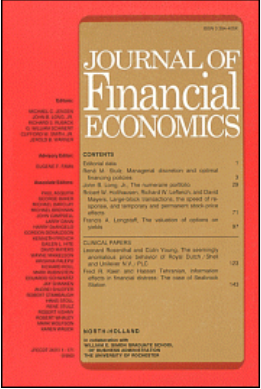股票和信贷指数期权的风险与收益
IF 10.4
1区 经济学
Q1 BUSINESS, FINANCE
引用次数: 0
摘要
我们建立了一个结构性信用风险模型,该模型允许我们通过指数成份股的资产动态为股票/信用指数及其期权定价。我们通过 MLE 对模型进行了估计,发现股票和信贷指数期权价格在样本外得到了很好的解释。与近期的实证研究结果相反,通过我们的模型,两个期权市场的定价并不不一致。两种期权的收益率虽然都很极端,但并没有任何错误定价的迹象。我们的分析表明,要共同解决各种工具的定价问题,需要正确归因于三种不同的系统性风险来源:资产风险、方差风险和跳跃风险。本文章由计算机程序翻译,如有差异,请以英文原文为准。
The risk and return of equity and credit index options
We develop a structural credit risk model, which allows us to price equity/credit indices and their options through the asset dynamics of index constituents. We estimate the model via MLE and find that equity and credit index option prices are well explained out-of-sample. Contrary to recent empirical findings, the two option markets are not inconsistently priced through the lens of our model. Returns on both options, while extreme, do not indicate any evidence of mispricing. Our analysis suggests that jointly addressing the pricing of various instruments requires properly attributing three different sources of systematic risk: asset, variance, and jump risks.
求助全文
通过发布文献求助,成功后即可免费获取论文全文。
去求助
来源期刊

Journal of Financial Economics
Multiple-
CiteScore
15.80
自引率
4.50%
发文量
192
审稿时长
37 days
期刊介绍:
The Journal of Financial Economics provides a specialized forum for the publication of research in the area of financial economics and the theory of the firm, placing primary emphasis on the highest quality analytical, empirical, and clinical contributions in the following major areas: capital markets, financial institutions, corporate finance, corporate governance, and the economics of organizations.
 求助内容:
求助内容: 应助结果提醒方式:
应助结果提醒方式:


